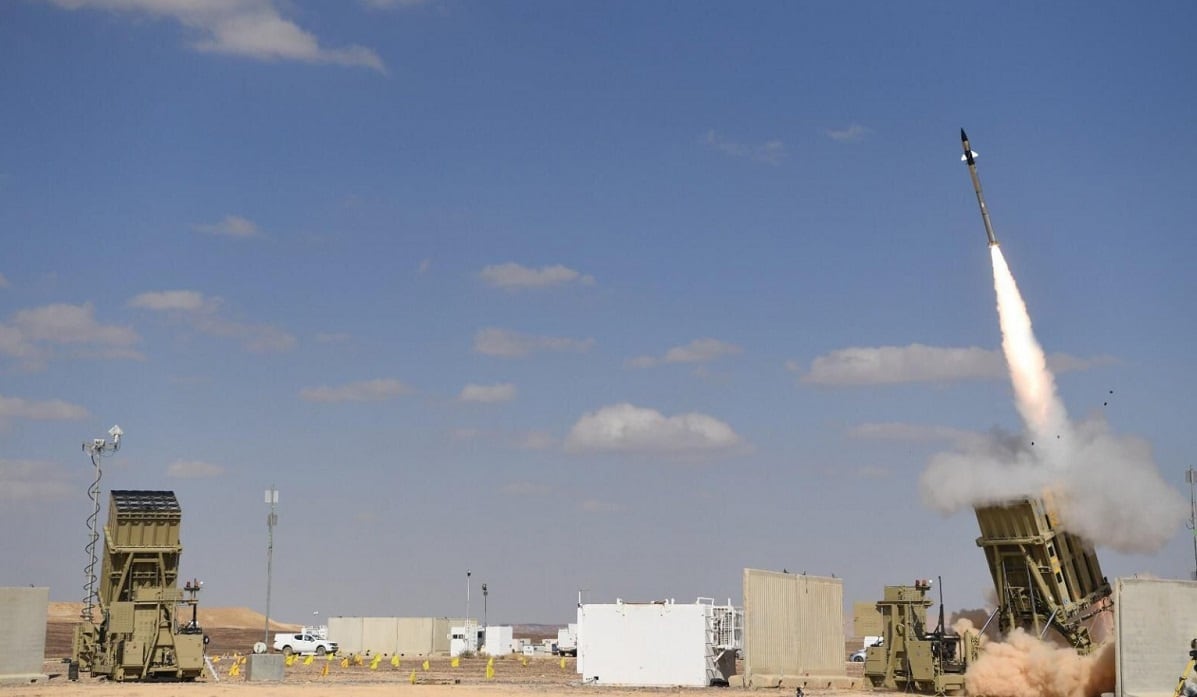JERUSALEM — The U.S. Army has completed an interceptor test of the Iron Dome air defense system, the second event of its kind since two batteries were supplied to the service at the end of 2020.
The newly revealed test at White Sands Missile Range, New Mexico, which took place in mid-June, was carried out in conjunction with the Israel Missile Defense Organization, according to a statement from the Israeli Defense Ministry. Moshe Patel, the director of the organization, said that during the test, “the system intercepted all the threats, while being interoperable with U.S. systems.”
The ministry noted the test “took a critical step toward fielding the first of two Iron Dome Defense System-Army (IDDS-A) batteries.”
“As part of the U.S. Army’s operational training, American troops operated the system, which functioned with optimal effectiveness against a variety of threats and intercepted targets from different ranges,” said Pini Yungman, an executive vice president and head of Rafael Advanced Defense Systems’ air and missile defense unit. The Israeli company helps manufacture Iron Dome.
Statements from the Defense Ministry and Rafael both noted that testing “prepares the system for U.S. operational forces’ use by ensuring it meets U.S. Army safety standards and that the system will effectively operate within the U.S. AMD [air and missile defense] architecture.”
According to the statements, the U.S. Army plans to field the two Iron Dome Defense System-Army batteries as an interim cruise missile defense solution. The service has deployed one Iron Dome system to Guam since the fall of 2021.
“It’s important to understand that implementation for the U.S. is about the ability to integrate this system into our air defense picture,” said Maj. Gen. Brian Gibson, director of the U.S. Army’s Air and Missile Defense Cross-Functional Team, said following the test. “We need to integrate this into our U.S. architecture, and to give confidence to our regional commanders that we can integrate this system safely into what they have.”
Iron Dome is designed for use at fixed and semi-fixed locations to defend against “sub-sonic Cruise Missiles (CM), Groups 2 and 3 Unmanned Aircraft Systems (UAS), and rockets, artillery, and mortar threats,” the statement added, referring to a system by which drones are categorized by weight.
The test comes two weeks after the U.S. Marine Corps carried out a successful test of the Iron Dome’s Tamir missile at the same range.
Rafael in the early 2000s developed Iron Dome, which uses radar from Israel Aerospace Industries subsidiary Elta Systems. In the U.S., Rafael partners with Raytheon Technologies to produce the system.
“Future variants of the IFPC [Indirect Fire Protection Capability] program include technology insertions such as directed energy,” the recent Israeli statements said. The addition of directed-energy — or laser — technology to the Iron Dome system was shown to U.S. President Joe Biden when he visited Israel.
Iron Dome has been active for more than a decade with the Israel Defense Forces. It was initially used against short-range rocket threats from the Gaza Strip, but it has since received upgrades to confront numerous types of emerging threats. In May 2021, it was publicly revealed to have intercepted a drone for the first time during combat.
The Israel Missile Defense Organization, a division of the Defense Ministry’s Directorate of Defense Research and Development, leads the development of Israel’s multitiered air defense systems, including Iron Dome, David’s Sling and Arrow. The U.S. Congress has supported all three systems. The IMDO partners with the U.S. Missile Defense Agency on systems such as Arrow-4.
Seth J. Frantzman is the Israel correspondent for Defense News. He has covered conflict in the Mideast since 2010 for different publications. He has experience covering the international coalition against the Islamic State group in Iraq and Syria, and he is a co-founder and executive director of the Middle East Center for Reporting and Analysis.




